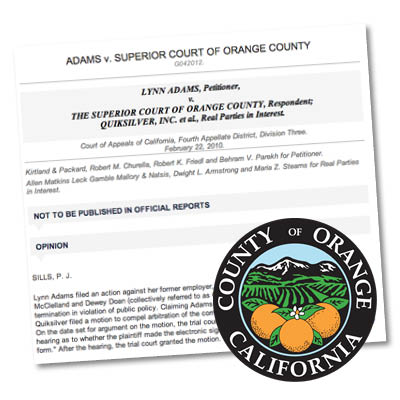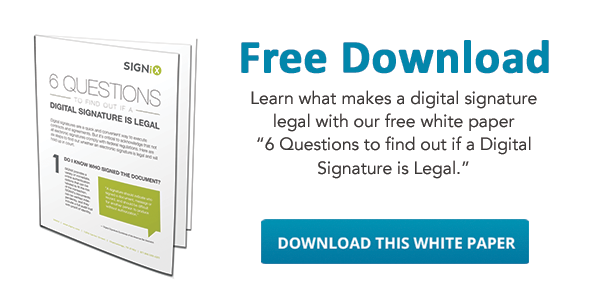Here at SIGNiX, a lot of people ask us why our digital signatures will hold up better in court than other electronic signatures. We could tell you, but we’d rather show you how electronic signatures have held up in the real world. Let’s take a look at the court case Adams vs. Quiksilver, Inc. (2010 Cal App. Unpub. LEXIS 1236 (Feb. 22, 2010))
The Case
In 2008, Lynn Adams applied for a job with Quiksilver. After interviews, Quiksilver told her that one of the requirements before she could be hired was passing a background check. An employee at Quiksilver emailed her a link to an online background check form asking her to review and edit the information and sign the document.

When Lynn clicked the link to open the document, she wasn’t required to create a login or authenticate herself. More concerning? The form already had her name filled out beside the sentence “By typing my name, I fully understand the above Notice and Authorization.”
Lynn testified that she never typed her name on the form. She said that someone else typed her name, essentially electronically signing the document for her.
In court, a Quiksilver employee testified that anyone who had access to the link sent to Lynn could open and edit the document. The employee also testified that two Quiksilver employees also had access to edit the document, which means any of them could have electronically signed the document.
The court found that there wasn’t enough proof to say that Lynn signed the document under California Civil Code provisions over electronic transactions, and they decided in Lynn’s favor.
The Issues
- This court case addresses several potential challenges with electronic signatures. First, the electronic signature didn’t require any authentication to prove that Lynn was who she said she was. Because there was no authentication, Quiksilver couldn’t prove Lynn was the person who signed the document.
- The second problem with this electronic signature is that it didn’t demonstrate Lynn’s intent to sign. Intent is a legally required part of any electronic signature process, and it should be clearly captured for every signer. This form never captured intent because the signature was already filled in and required nothing from her.
- Then, there’s the lack of an audit trail. An audit trail is a detailed log of the actions taken on a document. This includes any changes made to the document, including signatures. If this document had an audit trail, Quiksilver could track when the document was signed and who signed it. Since there was no audit trail, Quiksilver couldn’t prove the events leading up to the signature.
- The fourth and final issue with this electronic signature was the lack of disclosure and consent. When Lynn opened the document, she wasn’t alerted that she was going to be signing a legally binding document. Doing any business through electronic records demands that recipients be informed clearly as to the nature of the documents and agree to their use.
To learn more about what makes a digital signature legal according to guidelines put out by the American Bar Association, download your free digital copy of our white paper.
This blog post shouldn’t be seen as legal advice. You should discuss specific issues about using digital signatures in your business with your own legal counsel and compliance officers.
%20formatted-1.png?width=2528&height=739&name=SIGNiX%20Logo%20Main%20(white)%20formatted-1.png)

